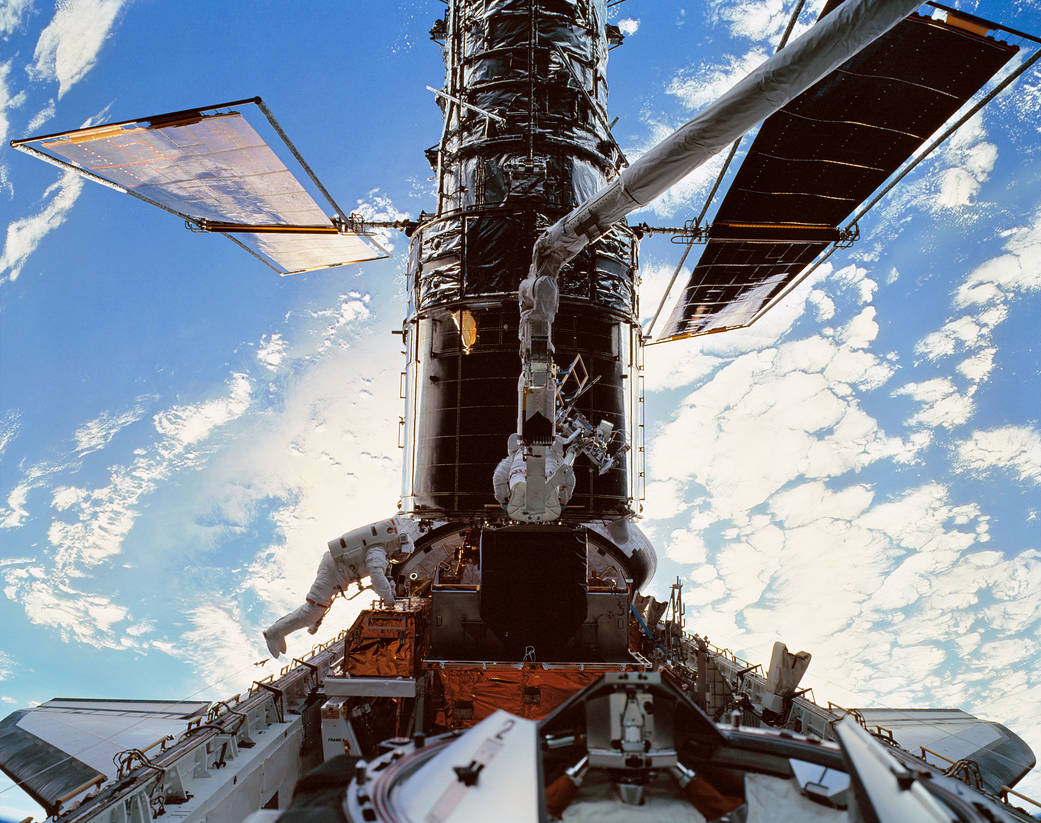This week in 1999, space shuttle Discovery, mission STS-103, launched from NASA’s Kennedy Space Center on the third Hubble Space Telescope servicing mission. Over the course of three planned extravehicular activities, the STS-103 crew restored Hubble to working order and upgraded some of its systems, allowing the then decade-old observatory to get ready to begin its second scheduled decade of astronomical observations. Hubble was released from Discovery’s cargo bay Dec. 24. Here, astronauts Michael Foale and Claude Nicollier install a Fine Guidance Sensor into a protective enclosure in the shuttle’s payload bay. The NASA History Program is responsible for generating, disseminating and preserving NASA’s remarkable history and providing a comprehensive understanding of the institutional, cultural, social, political, economic, technological and scientific aspects of NASA’s activities in aeronautics and space. For more pictures like this one and to connect to NASA’s history, visit the Marshall History Program’s webpage. (NASA)
1999年的这个星期,发现号航天飞机从美国国家航空航天局肯尼迪航天中心发射升空,执行第三次哈勃太空望远镜的维修任务。在三次有计划的舱外活动过程中,STS-103宇航员使哈勃太空望远镜恢复了正常工作,并升级了部分系统,使当时已有十年历史的哈勃望远镜准备开始第二个预定的十年天文观测。哈勃望远镜于12月24日从发现号的货舱中释放出来。在这里,宇航员Michael Foale和Claude Nicollier在航天飞机的有效载荷舱内安装了一个精密的导航传感器。NASA的历史项目负责产生、传播和保存NASA的非凡历史,并全面了解NASA在航空航天领域活动的体制、文化、社会、政治、经济、技术和科学方面。欲了解更多类似的图片,并与NASA的历史联系起来,请访问马歇尔历史项目的网页。(NASA)







